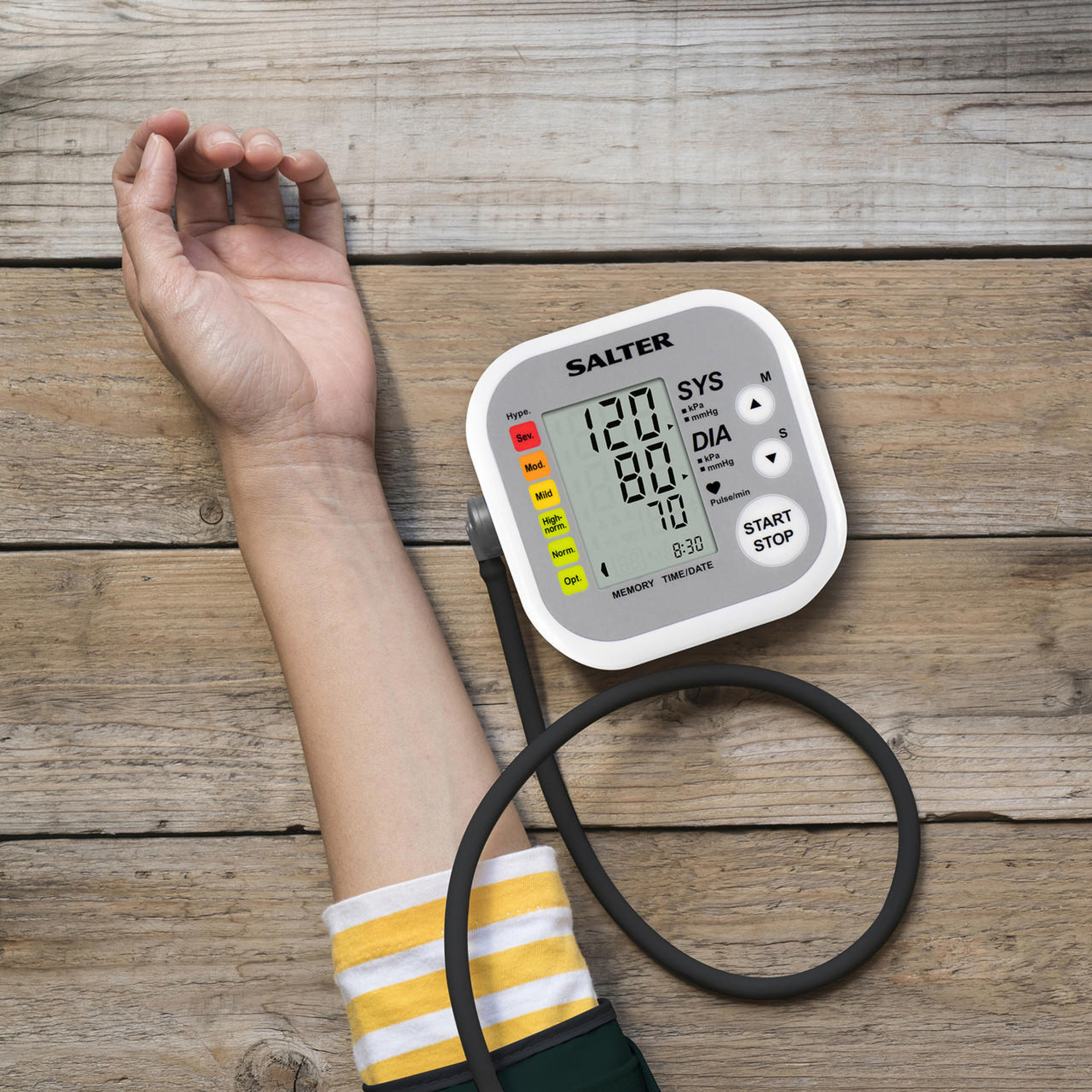How To Properly Measure Your Blood Pressure at Home
Posted by Team Salter on 3rd Jul 2024
How to Properly Measure Your Blood Pressure at Home
We know how important it is to stay informed about our
health and it can feel incredibly empowering to know our bodies, inside and
out. Staying on top of your health can help prepare you if something were to go
wrong. However, with doctors under an immense amount of pressure, it can be
difficult to get an appointment when checking something as simple as your blood
pressure.
Here at Salter, we want to give you the power and knowledge to stay
informed about your health and know what steps to take if something doesn’t
feel quite right.
Monitoring Your Blood Pressure
It is important to measure your blood pressure correctly because if you do it wrong, you could cause yourself a lot of unnecessary stress or potentially miss something significant. There’s no need to worry, measuring your blood pressure is straightforward.
Prepare yourself correctly
Before you start, make sure you’re sat upright with your legs uncrossed and flat on the ground. Ensure the arm you are measuring is supported, for example on a table or a wide armrest. It’s important to avoid any caffeinated drinks, exercise, or tobacco 30 minutes before measuring your blood pressure.
Ensure a correct fit
Wrap the cuff around your arm slightly above the elbow and check there is no fabric between the cuff and your arm. The cuff should be snug but not tight, you should be able to fit one finger between the cuff and your arm. Make sure both your arm and hand are relaxed and loose. For accurate results, avoid tensing your arm muscles or making a fist during the test.
Ready to begin testing
Turn the monitor on and press the start button. At this time, the cuff will begin to inflate and tighten; it is normal for this to be a little uncomfortable but if it causes an intolerable pain, stop the monitor, readjust the cuff, and start again.
Understanding the results
Once the monitor has finished its reading, you will see two numbers appear on the screen. The top number is the systolic number, and the bottom number is the diastolic number. Ideally, you want your blood pressure to be between 90/60 and 120/80. Anything below 90/60 is considered as low blood pressure, and anything above 140/90 is high. Between 120/80 and 140/90 is elevated and should be monitored to prevent high blood pressure.
Take another reading
Repeat the process a couple of times, 2-3 minutes apart, to get a clear result, allowing your muscles to recover.
Top Tips
Timing matters - Take regular measurements
Blood pressure can change throughout the day, so if you are tracking the results for a specific reason, you will want to take the reading around the same time every day to ensure it isn’t affected by too many variables.
Take multiple readings
Salter Blood Pressure Monitors can store up to 60 readings so you can compare past results; this will help you spot significant changes if they occur. These highly practical monitors can also store readings for two different people, so there would be no confusion over who the results belonged to.If your blood pressure is significantly higher or lower than normal, book an appointment with your GP so they can assess this and discuss the appropriate treatment with you.



